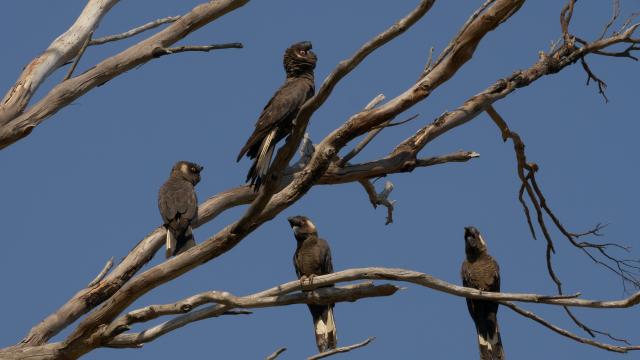By Tyler Wright
A documentary about the crisis facing Western Australia’s Black Cockatoo species was screened at Belgrave’s Cameo Cinemas on Thursday 16 February in an attempt by filmmaker Jane Hammond to reach local communities across the country.
From October 2021, Hammond trecked along the south coast with scientists, monitoring the patterns of the White-tailed Black Cockatoo, the Baudin’s Cockatoo and the Carnaby’s Black Cockatoo.
“I went to spent time with volunteers from the Kaarakin Cockatoo Rehabilitation Centre in Perth and then the various components of the story and where the threats were speaking to people working on the ground, trying to protect the birds or trying to protect habitat,” Hammond said.
“We start the film with some Indigenous custodians in the southwest of WA and their story about the Red-tailed Black Cockatoo as a totem of one First Nations elder in the forest area.”
Hammond said the population of the Baudin’s Black Cockatoo is down to 4,000 “at best”.
“They are very much on the edge of going extinct because they’re still being shot by orchardists and nut farmers; people trying to defend their crops from these hungry birds who have worked out that apples and pears and nuts are great things to crack into and get a good seed.
“Our Carbaby’s there’s 40,000 of those and they’re also endangered; they’re a very very social bird, so we don’t know how many we need to support a viable population, but they rely on one another for information on food and water in the landscape.”
Hammond said the Black Cockatoo’s food source was stripped away when Banksia was replaced with pine trees at the Carnaby’s black cockatoo ‘mega roost’ in Pinjar.
“The birds have learnt to feed off those pines, rely on them for roosting and feeding before they go out to the wheat belt to breed,” Hammond said.
“And those pines are all likely to be gone unless we can stop the government knocking every single pine tree out of that area.”
The film also looks at the spilling of grain on roads leading to the death of birds looking for food.
“There’s so little food left, they’re on the roads picking tiny grains of canola from between the cracks in the bitumen and then they’re getting wiped out by cars,” Hammond said.
“On one stretch of road east of Albany… in the month of May…128 Carnaby’s were killed on that stretch of road just in one month that they were being counted…with an endangered species, that’s quite a dramatic loss.
“The film was really saying we need legislation to seal our grain trucks for that issue; not only is it impacting our Carnaby’s, but endangered birds and threatened birds and other birds all across the nation.”
Hammond said community groups are able to organise a follow up community screening at a local venue.
“It’s all over the place. I do a national tour or regional tour and then the rest of the time people just use the film for their event,” she said.
“We’re really at a peak point where if we do nothing, we will lose all three species of black cockatoos in Western Australia within two decades, but probably more likely about 14 years.
“But we can turn it around…the film [is] trying to get people to take action, to turn it around to protect habitats, to prioritise native species, endangered species…we want legislative change.”
‘Black Cockatoo Crisis’ was released in November 2022.







